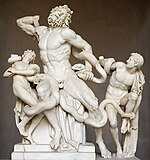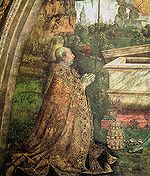Vatican Library

The Vatican Apostolic Library (Latin: Bibliotheca Apostolica Vaticana, Italian: Biblioteca Apostolica Vaticana), more commonly known as the Vatican Library or informally as the Vat, is the library of the Holy See, located in Vatican City. It was formally established in 1475, although it is much older—it is one of the oldest libraries in the world and contains one of the most significant collections of historical texts. It has 75,000 codices from throughout history, as well as 1.1 million printed books, which include some 8,500 incunabula.The Vatican Library is a research library for history, law, philosophy, science, and theology. The Vatican Library is open to anyone who can document their qualifications and research needs. Photocopies for private study of pages from books published between 1801 and 1990 can be requested in person or by mail. Pope Nicholas V (1447–1455) envisioned a new Rome with extensive public works to lure pilgrims and scholars to the city to begin its transformation. Nicolas wanted to create a "public library" for Rome that was meant to be seen as an institution for humanist scholarship. His death prevented him from carrying out his plan, but his successor Pope Sixtus IV (1471–1484) established what is now known as the Vatican Library. In March 2014, the Vatican Library began an initial four-year project of digitising its collection of manuscripts, to be made available online. The Vatican Apostolic Archive was separated from the library at the beginning of the 17th century; it contains another 150,000 items.
Excerpt from the Wikipedia article Vatican Library (License: CC BY-SA 3.0, Authors, Images).Vatican Library
Rampa dell'Archeologia,
Geographical coordinates (GPS) Address Nearby Places Show on map
Geographical coordinates (GPS)
| Latitude | Longitude |
|---|---|
| N 41.904722222222 ° | E 12.454444444444 ° |
Address
Musei Vaticani
Rampa dell'Archeologia
00120 , Vatican City
Vatican City
Open on Google Maps










